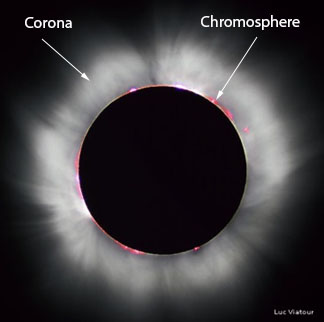

Coronal loops are more common around solar maximum, when the Sun is most active and there are many sunspots.ĭuring solar minimum, when the Sun is least active, another feature of the corona is apparent - dark patches called coronal holes. Coronal loops often appear to arc between pairs of sunspots with opposite magnetic poles. The energy they give off is almost entirely ultraviolet rather than in the visible light spectrum, which means they can only be seen with the help of specialized equipment.Ĭoronal Loops, Coronal Holes, and SunspotsĬoronal loops are often associated with sunspots, which are places on the Sun's surface where powerful magnetic fields break through and extend up into the Sun's atmosphere. Some loops are extremely hot, having temperatures well above a million degrees. The electrified plasma flows along the curving lines of powerful magnetic fields, giving the coronal loops their characteristic shape.Ĭoronal loops can extend upwards many thousands of kilometers above the Sun’s surface. Hot, dense plasma causes these loops to glow. This is still an open question, but with more observations and hard work, we may soon have a clear, detailed picture of the peculiar solar puzzle.Plasma flows along closed magnetic field lines in the corona that pull it back toward the solar surface, forming structures that appear to loop.Ĭoronal loops are ropey, curving strands of plasma that appear as arcs above the Sun's surface. If these flux tubes and reconnection events happen often enough and deliver enough energy, they can supply the corona with more than enough heat to sustain it. Sometimes these fields can even twist up amongst themselves so tightly that they literally break like an overstretched rubber band, releasing all that pent-up energy in a single flash known as a magnetic reconnection event. These tunnels act as conduits for even more magnetic energy in the form of shocks and waves to travel from place to place…like from the surface to the corona. Sometimes the magnetic fields can wrap around themselves, forming a tunnel (going by the cool sci-fi name of flux tubes). And in a recent paper, researchers using data from the Solar Dynamics Observatory have uncovered another two mechanisms to heat the corona with magnetic fields. Strong magnetic fields have long been suspected to play a major role in heating the corona, something that the Parker Solar Probe was sent to examine in more details. Perhaps in that roiling inferno of the surface hides the enigmatic source of the corona’s high temperature. Granules, sunspots, flares, mass ejections, and more bubble and erupt from the sun’s chaotic exterior. After all, that surface is exposed to the hard, cold, chilling vacuum of outer space, and is separated from the warming core by hundreds of thousands of kilometers of thick, soupy plasma.īut that surface is active, perhaps even more so than the turbulent corona above it. It’s not hard to imagine why the surface of the sun, called the photosphere, is so much cooler than the innermost core. The image above includes an image of Earth to show the size of the CME compared to the size of Earth. The CME did not travel directly toward Earth, but did connect with Earth’s magnetic environment, or magnetosphere, causing aurora to appear on the night of Monday, September 3. The coronal mass ejection, or CME, traveled at over 900 miles per second. On Auga long filament of solar material that had been hovering in the sun’s atmosphere, the corona, erupted out into space at 4:36 p.m. The conversion leaves a little bit of mass behind, and hence releases a little bit of energy.Įach individual reaction emits just a tiny little bit of energy, but repeat that process countless times and you end up with a fantastic, long-lived, powerful energy source, providing all the light for the entire solar system for billions of years.Īnd since it’s the only power source around, somehow heating up the corona.

In the deep, dense, hot core (ironically the only place that bests the temperatures of the corona), the incredible pressures overwhelm the natural repulsion of hydrogen, fusing them together to make helium. There’s only one power source in the sun, and that’s nuclear power. So it’s very obviously a very active and complicated place, which might provide a clue to its hellishly high temperature.

Thin wispy filaments, long tenuous loops, and whorls resembling fingerprints dance throughout the sun’s atmosphere. Detailed examination of the corona reveals very peculiar structures.


 0 kommentar(er)
0 kommentar(er)
